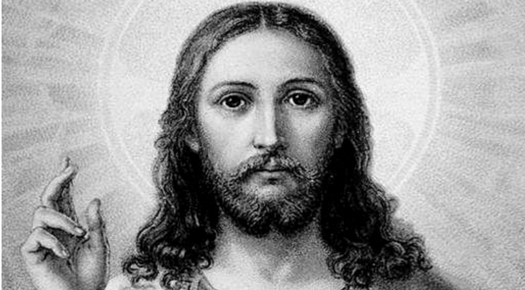
He may be portrayed as a Caucasian man with long flowing brown hair and creamy skin in most religious artworks, but Jesus Christ probably had short curly black hair and a much darker complexion, claims a forensic anthropologist.
Richard Neave, a retired medical artist, recently recreated the face of Christ by studying Semite skulls with the help of modern forensic techniques. According to his recreation, the Son of God had a wider face, darker eyes, bushier beard, shorter and curlier hair as well as a tanned skin tone – features typical to Middle Eastern Jews living in Galilee, Northern Israel.

Neave stressed that his recreation is that of an adult man, living in the same place and time as Christ, though some experts say that his depiction is still less accurate than those paintings made by great artists during the Renaissance period.
Without any skeleton or bodily remains that have been confirmed as Christ’s along with the lack of physical descriptions in the New testament, most previous images of Jesus would have been based either on the society in which he lived or hearsay. Bearing this in mind, Neave made use of forensic anthropology and information from the Bible to recreate a portrait that could resemble Christ.

Neave’s team used cultural and archaeological data to hypothesize that Jesus would have had facial features typical of Galilean Semites of his times. Basing his understanding on a description of events in the Garden of Gethsemane, as written in the New Testament, which states that Christ closely resembled his disciples, Neave scanned three Semite skulls from the era that had been found by Israeli archaeologists. Then his team used digital tomography to create slices of the skulls to reveal details about their constitution; after which they used specialist programs to calculate significant measurements and decipher how Jesus’ skin and muscles should look.

From all this data, the forensic experts created a digital three dimensional reconstruction of Jesus’ face before building a cast for the skull and adding layers of clay to match the thickness of facial tissues determined by the specialist programs. Features such as Jesus’ eyes, nose and lips were estimated to follow the shape of the underlying muscles projected by the shape of the skull.

Obviously, the skulls’ analysis could not reveal the color of Jesus’ eyes or the texture of his hair. So Neave’s team examined first century artwork from different archaeological sites from before the Bible was written. It is from these works that Neave hypothesized Jesus may have had dark eyes, black curly hair and a beard in keeping with Jewish traditions of the time. The Bible also describes how Christ wore his hair –short with tight curls– unlike most Renaissance depictions of Jesus. This is with reference to a Biblical passage by Paul, who wrote that it was disgraceful for a man to sport long hair.
“If a man has long hair, it is a disgrace to him,” he wrote.
However, this description contradicts the long-haired Jesus seen in the Shroud of Turin, which is believed by most to bear the image of Christ when he was wrapped in cloth after being crucified. Neave’s team also analyzed skeletal remains of Semite men from Jesus’ era to determine the average height and build of a Jewish man living in Galilee. This allowed them to hypothesize that Christ was only 5 feet 1 inch tall and weighed approximately 50 kilograms. They also said that he would be a lot more tanned and muscular than traditionally depicted in Western art, as he spent most of his time working outside as a carpenter until he turned 30.

Neave, author of ‘Making Faces: Using Forensic and Archaeological Evidence’, has also reconstructed the faces of other historical figures, including Alexander the Great’s father, King Philip II of Macedonia.
Photo Credits: Express UK
